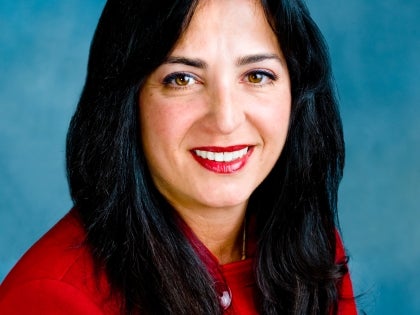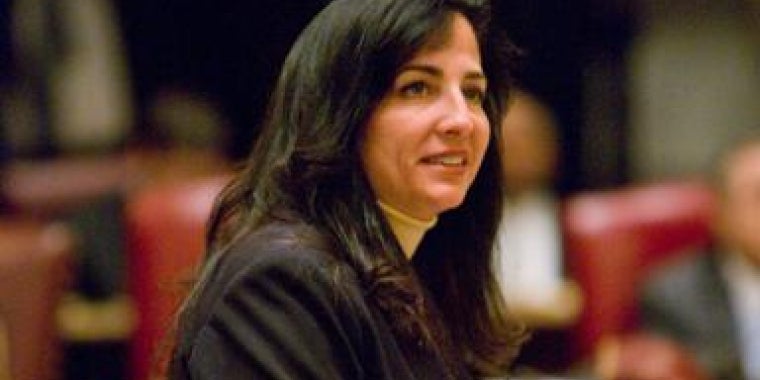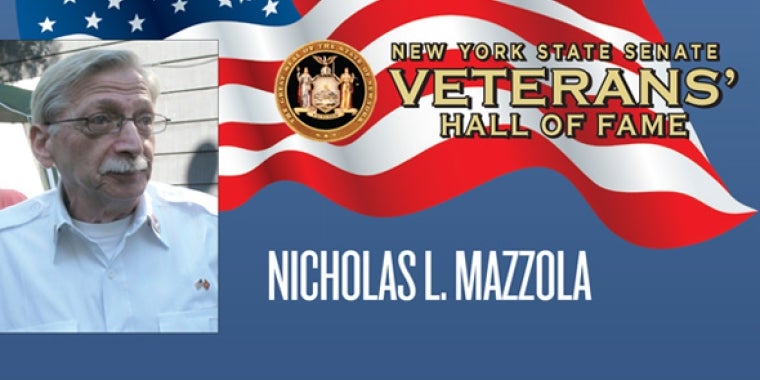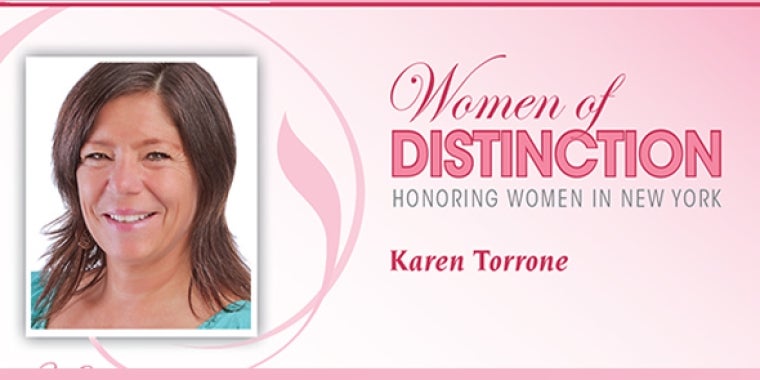
Defending the ‘Guido’ Beyond ‘Jersey Shore’

by Lisa Fogarty, Editor
01/28/2010
Before she was a state senator who fought to increase the minimum wage, stood up for the gay and lesbian community and delivered what was arguably the most poignant and compassionate appeal in favor of gay marriage and committment to ever make it to the senate floor, Diane Savino was a “guidette” — voluminous raven hair and all.
And she isn’t the least bit ashamed to admit it.
“I was overtly ethnic looking,” Savino said, referring to how she felt out of place as an olive-skinned, curly-haired, curvaceous Italian American coming of age in the Brady Bunch blonde 1970s. “How you identified yourself mattered — how you looked determined that.”
Savino (D-Staten Island) proudly dished on the hotly contested “guido” and “guidette” subculture she identified with as a young adult growing up in Astoria at a discussion on Italian-American youth style held Thursday at the John D. Calandra Italian American Institute in Manhattan.
“It was never a pejorative term,” she said. “It was part of social identification in a culturally diverse city.”
For all the vitrol directed at MTV’s controversial reality show “Jersey Shore,” in which eight self-professed guidos and guidettes get tan, get toned, hook up, fight, use hair gel and repeat, the idea of the guido has spurred debate in academia about why some youths continue to identify with what has become a negative stereotype — and whether it’s really as negative a subculture as MTV and popular mobster movies would have you believe.
The colloquium, led by guest Donald Tricarico, a professor and sociologist at Queensborough Community College, who has written about the guido subculture for two decades, drew such a large crowd the institute had to open a second room where guests could view the panel from a video screen. The purpose of the discussion, according to Tricarico, was to illustrate how little is known about the youth culture and to encourage productive discourse about how and why the group evolved that stretches beyond the images put forth on MTV.
“Guido is a struggle for recognition and respect by an age fraction that privileges consumption rather than formal education; reflecting class differences in an ethnic culture that continues to evolve in metropolitan New York City and throughout the Northeast,” Tricarico said.
Although the term may not have become popular until the 1980s, the subculture has existed as far back as the 1950s, according to the professor, when working-class Italian-American teens found escape and solace in identifying themselves as tough greasers with slicked-back hair, clad in black leather jackets and sleeveless shirts. The guido look changed over the years, of course, and “Saturday Night Fever’s” Tony Manero was certainly more polished than your average rabble-rouser, but his outlet — the disco — provided the same sensual escape as underground clubs do for the contemporary “guido,” Tricarico said.
And Tony, for all his faults, wasn’t a bad guy. He worked hard and aspired to something greater than what his surroundings could provide — a key element absent in media’s modern-day portrayal of Italian-American youths, according to Johnny DeCarlo, a self-professed guido, freelance writer and owner of Bonnie & Clyde’s Catering in Lodi, NJ. DeCarlo joined Tricarico to help explain how MTV’s images are skewered.
“A true guido is someone with dreams, aspirations, goals — not someone who has no direction whatsoever,” DeCarlo, 29, said.
DeCarlo, an aspiring actor, auditioned for the MTV show, believing it was going to depict the guido in a balanced way, emphasizing not just a love of nightlife, but also strong family and religious roots. “I wasn’t told it was all about the Jersey Shore and acting as crazy and nutty as you can,” he said.
Being a guido, DeCarlo added, is about “the food, wine, cigars, coffee, Cadillacs, gold chains, certain ways of speaking, the dialect. They’re not bad things, we’re not talking about criminal behavior.”
But several audience members, who had a chance to ask Tricarico and DeCarlo questions, took offense to the term “guido” and how Italian-Americans are portrayed on television and in movies and advertising campaigns.
“The name ‘Guido’ has a badge of honor in Italy,” one man said. He reminded the panel of Guido Anselmi, the protagonist in “8 1/2,” Federico Fellino’s 1963 cinema masterpiece that is probably less known to Italian-American teens than any show on MTV.
“Everybody’s looking at ‘guido’ as negative, while in Italy it’s a sophisticated name.
Although Italian-Americans are the fifth largest ancestry group in the United States, according to the 2000 Census, they are mostly concentrated in the Northeast. Travel to Nebraska or Iowa and, according to many participants, MTV’s version of the guido is the sole image of Italian-Americans most midwesterners are receiving.
“With one showing of a program like ‘Jersey Shore,’ unfortunately, that is what other people think all Italian-American youth are like,” said Joseph Sciame, a past president of the national Order Sons of Italy. Sciame said there are many groups who have worked hard to portray Italians in a good light — by promoting their talented writers, electing smart and effective leaders like Savino and celebrating their traditions with tributes such as the Columbus Day parade. “You might not think it’s damaging, and I respect your opinion, but I’ll never understand it.”

